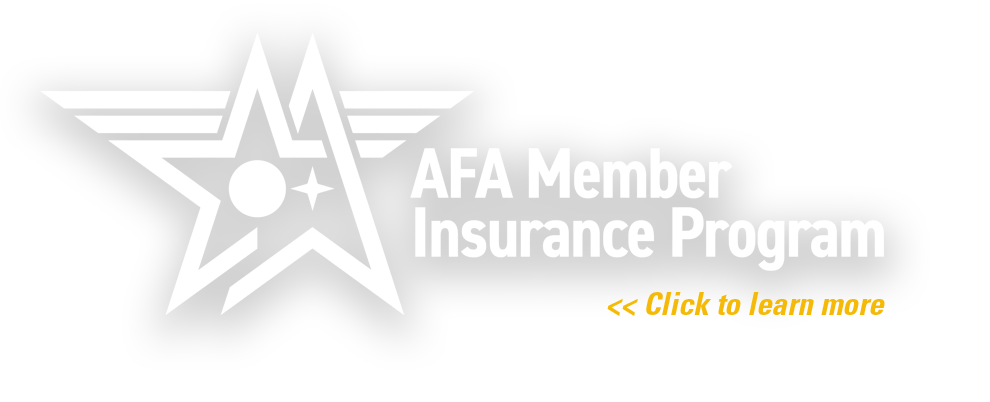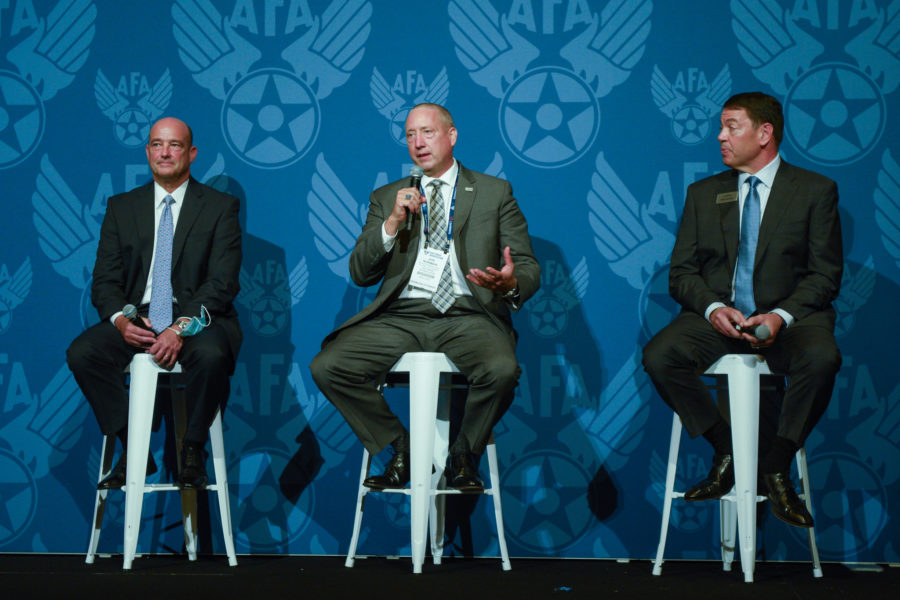Munitions needed in a near-peer competition, especially with China, may call for longer ranges, and aircraft may need to be able to carry more of them. Defense industry executives made these projections among others in a panel session Sept. 20 at AFA’s Air, Space & Cyber Conference in National Harbor, Md.
Range and Scale
Squaring off with a technologically advanced and well resourced military, “You no longer have that sanctuary that maybe you [would] have on some third-world battlefield,” said John Martins, director of international programs for missile systems maker MBDA. “Specifically, you introduce the air threat as well as a potential threat that can protect themselves.” Martins could foresee “a degree of standoff”—sufficient range to thwart a response—“becoming a requirement.”
Retired Air Force Maj. Gen. Jon A. Norman, vice president of customer requirements and capabilities at Raytheon Missiles & Defense, mentioned range to match the long distances over bodies of water such as in the Indo-Pacific region but cautioned that “not every war fight requires a two-and-a-half-million-dollar exquisite solution,” he said. “What is that right weapons mix of both direct attack and standoff that we need? Not every weapon needs to be hypersonic, thousand-mile—but we do need that within our arsenal.”
Mark Altobelli, director of Boeing’s Phantom Works, expects the scale of munitions to go up in terms of both numbers needed and how many can fit on one airplane.
“When you walk out the door and your bomber has four, maybe eight hits, that’s nice. And I think it’s great, and we need that,” Altobelli said. “But what does it mean when he walks out the door with 20 or 30. And what does it mean when a fighter walks out the door—an F-15E or and F-25[E]X—carrying five or seven standoff weapons?”
Virtual Testing
The industry executives expect more testing to take place in virtual environments, partly in the interest of efficiency also in that of secrecy.
As an example, “A lot of us are working on long-range hypersonics,” said Raytheon’s Norman. “It costs a lot of money to test one of those, and there are very limited locations [where] you can test those, and the availability is incredibly limited.”
Then when such a test does take place, he said, “If I’m an adversary, I’m looking forward to the notifications to mariners and aircraft of when you’re doing that test so I can park [advanced geospatial intelligence] … right there to watch you test that.
“So let’s do that the fewest times as possible. Let’s do it in a virtual environment. … I think there are ways to get after this, but it’s time to stop sitting back, and it’s time to probably throw the rock and make some decisions on what those next-generation, those revolutionary capabilities we need are.”
Setting Requirements Soon
Norman suggested that locking in capability requirements and cost estimates sooner rather than later “will also help the services selling it over to the Hill,” he said. “And it certainly helps us, within industry, [in] designing toward that specification point.”
New approaches such as digital engineering and model-based systems engineering are an area “where we’re going to see great savings,” Norman said. “So let’s pick that capability that we want, get it out to the industry, come back with your best ideas, and move forward on in it.”


